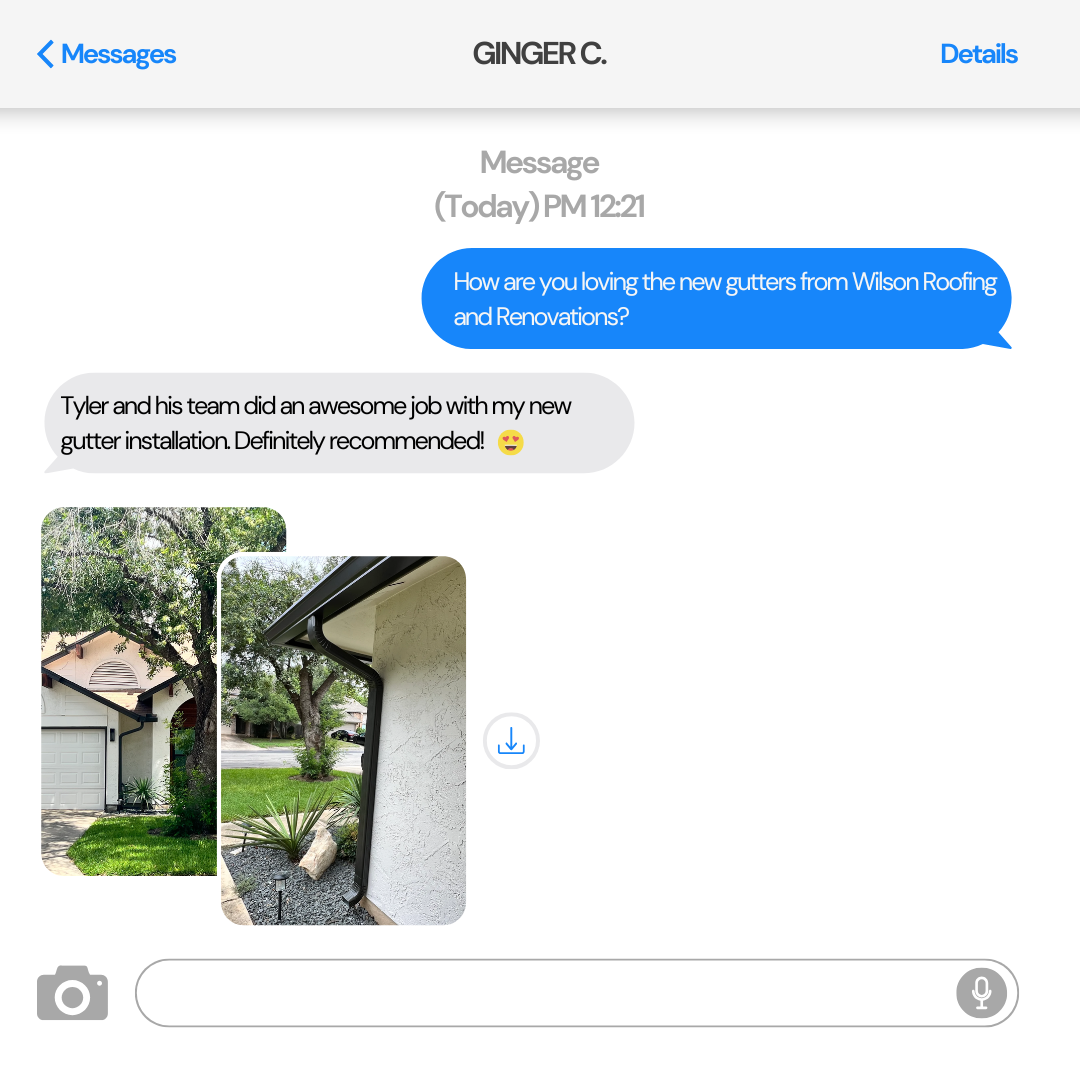Roof Maintenance Matters!
Your roofing system endures constant assault from nature’s forces. Intense Texas sun beats down relentlessly during summer months. Violent thunderstorms pummel it with wind and rain. Hailstorms can strike without warning. Over time, this continuous exposure degrades materials. UV radiation alone breaks down asphalt shingles at the molecular level, causing brittleness and cracking. Daily temperature swings cause expansion and contraction cycles that gradually work nails loose from decking. Wind-driven rain exploits any weakness it finds, working its way beneath compromised shingles. Winter ice dams force water to flow backward under roofing materials instead of safely off the edge.
Consistent maintenance helps you identify developing issues while they’re still minor and inexpensive to address. Consider it preventive care for your home’s protective shell. Spending $200 on a timely repair today prevents a $5,000 emergency replacement down the road. Insurance companies also look favorably on homeowners who maintain detailed service records, which can streamline the claims process if storm damage occurs and documentation is needed.
Keeping Gutters and Downspouts Clear
Your gutter system plays a crucial role in the overall performance of your roof. When gutters become packed with leaves, twigs, or granular material shed from aging shingles, water can’t drain properly. It backs up against the roof edge and pools around your foundation instead. This standing water creates ideal conditions for fascia board deterioration, soffit damage, and can even contribute to basement flooding or foundation movement.
Schedule gutter cleaning at minimum twice annually—spring and fall are typically ideal, though properties with heavy tree coverage may require more frequent attention. After clearing debris, flush the downspouts with a garden hose to verify unobstructed flow. Gutter guards are worth considering for homes surrounded by mature trees, as they reduce debris accumulation and extend intervals between cleaning sessions.

Checking Shingles, Flashing, and Roof Penetrations
Using binoculars from ground level, scan your roof for these warning signs:
- Absent, fractured, or curling shingles indicating age-related wear or weather impact
- Black streaks or moss accumulation suggesting moisture retention and algae colonization
- Compromised or detached flashing at chimneys, vent pipes, or skylight installations
- Significant granule depletion with bare patches visible on shingle surfaces showing advanced deterioration
From inside your attic, look for dampness in insulation, discoloration on rafters or sheathing, or sunlight penetrating through the roof deck—all indicators of leaks or inadequate ventilation. Inspections immediately following severe storms are particularly valuable, as active leaks are easiest to trace to their source while they’re happening.
Checking Shingles, Flashing, and Roof Penetrations
These zones handle the highest volume of water movement and commonly experience failures first. Roof valleys, where two planes intersect, funnel concentrated runoff and undergo accelerated deterioration. Verify that caulking remains intact and metal flashing shows no corrosion or separation. Valleys must stay debris-free so water flows unimpeded toward gutters rather than pooling and eventually seeping beneath shingle layers.
Drip edge trim along the perimeter requires secure attachment and correct positioning to guide water into gutters instead of behind them, where moisture would saturate fascia boards and cause wood decay.
Arrange for Professional Inspections
Even if you handle basic upkeep yourself, bring in a professional roofing contractor for a thorough annual inspection—and always after major weather events. Experienced professionals recognize subtle warning signs that untrained eyes miss, such as hairline hail impact damage, deteriorating underlayment, or ventilation deficiencies that accelerate your roof’s aging process. Professional documentation also protects your manufacturer’s warranty, as many require periodic inspections as a coverage condition.
The Essential Takeaway
Consistent maintenance extends your roof’s functional life, prevents water infiltration, and helps you sidestep expensive surprises. It’s among the most straightforward ways to safeguard your most significant financial investment. A proactive approach means you dictate the schedule and budget for roof-related work, instead of facing crisis repairs at the worst possible time.
Leave the Ladder Work to the Professionals
Trained inspectors spot problems homeowners often overlook. Let our team perform a comprehensive evaluation.





